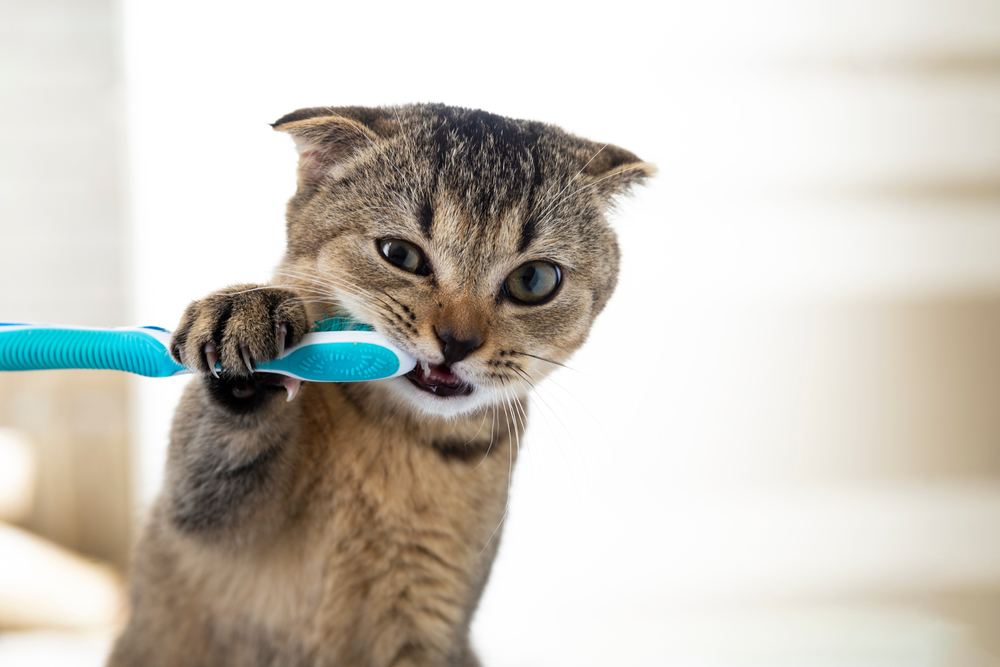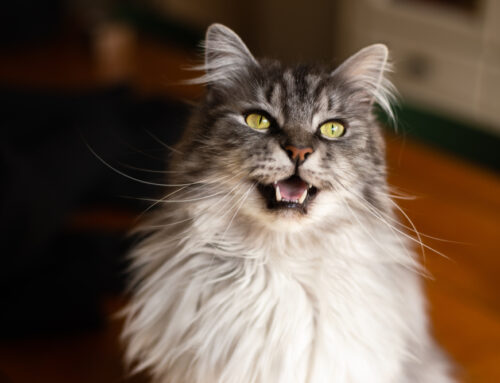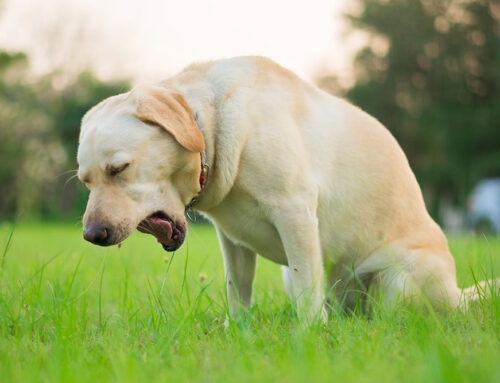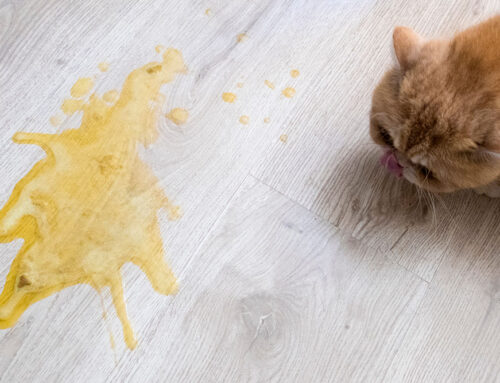Resorptive disease is a painful dental condition that is common among cats. Resorptive lesions (RLs) affect up to 40% of adult cats, but many pet owners are unaware of the signs. Feline resorptive lesions (i.e., feline odontoclastic resorptive lesions ([FORLs]) gradually break down an affected tooth and its supporting structure, leading to discomfort and potential complications if left untreated. Our Palisades Veterinary Hospital team wants all cat owners to be aware of resorptive disease’s signs and treatments.
Resorptive lesion signs in cats
Feline resorptive disease causes the body to break down and absorb the teeth and their supporting structures. RL most often manifests at the gumline, damaging tooth enamel and dentin, the tooth’s middle layer that surrounds the pulp.
Resorptive disease’s cause is unknown, but veterinarians suspect several factors may contribute to RL development, including genetics, dental plaque and tartar buildup, gum inflammation (i.e., gingivitis), and abnormal calcium metabolism. Certain nutritional deficiencies and systemic diseases may also increase a cat’s RL risk.
You will likely be unaware that your cat has RL, as most cats do not display pain or discomfort signs. Sometimes, tooth resorption appears as a gap or hole, which can be mistaken for a dental cavity. However, dental cavities are rare in cats, so your cat may have an RL if they exhibit these signs:
- Difficulty chewing, especially hard food or treats
- Excessive drooling
- Pawing at the mouth
- Unkempt coat or lack of grooming
- Bad breath (i.e., halitosis)
- Bleeding gums
- Weight loss
- Behavior changes (e.g., hiding, lethargy)
If your cat exhibits any of these signs, schedule a dental checkup with our Palisades Veterinary Hospital team, so we can diagnose and address your whiskered pal’s RLs and other dental conditions before they become severe. Since some cats may not exhibit discomfort signs until a condition has progressed significantly, regular veterinary wellness exams are essential to keep your feline friend in excellent health.
Feline resorptive lesion treatments
Our veterinary team will devise an effective treatment protocol if your cat is diagnosed with RLs. RL treatment depends on the condition’s severity but may include any of the following:
- Filling small lesions — If a lesion is small, our team fills it, much like your dentist fills a cavity. A filling can be a temporary fix for a year or two, but it is not a permanent RL fix.
- Tooth extractions — Usually, an affected tooth’s extraction is the best way to alleviate your cat’s pain. If our team believes an affected tooth is too damaged or fragile for our team to extract, we refer you to a veterinary dentistry specialist to perform this complex tooth extraction.
- Eating habit changes — After losing one or more teeth, your cat will have difficulty chewing a hard kibble diet. We recommend alternatives, such as a nutritious wet food, for your kitty’s eating comfort and enjoyment.
- Follow-up dental examinations — Many cats with RLs also have other underlying dental conditions, and because of this, we recommend frequent dental exams to manage their oral health.
Preventing dental conditions in cats 
Resorptive disease is a painful condition that requires prompt veterinary diagnosis and treatment to manage your cat’s pain. Understanding RL and other dental conditions is important because they impact your cat’s health and well-being. By understanding dental diseases’ causes, signs, and treatment options, you proactively safeguard your feline companions’ oral health and overall well-being.
Because RLs’ cause has not been determined, you cannot prevent your cat from developing this condition. However, if your cat develops an RL or other dental disease, you can help prevent the condition from becoming severe by ensuring your whiskered pal has regular dental exams and professional dental cleanings, daily toothbrushing, and a nutritious diet. Keep in mind that your cat’s genetic disposition may contribute to their RL risk. By scheduling your cat’s regular dental checkups, our team can identify your feline friend’s RL and other dental condition risks, helping minimize the condition’s progression.
Our Palisades Veterinary Hospital team has the expertise to diagnose and treat feline resorptive lesions and other dental conditions. Call us to schedule your cat’s dental checkup or to learn additional information about RLs and other dental conditions.








Leave A Comment